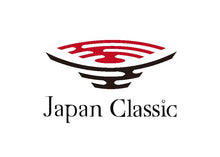【Japanese Pottery】Rising‑Flame vs Falling‑Flame Kilns: Fire Movement & Firing Effects
About the Author
Hayato Eihara
I am a Japanese resident living in Japan!
With years of experience, I share in-depth and detailed information about Japan with the world.
As part of my mission to promote Japanese culture, I also run Japan Classic, an online shop specializing in unique, high-quality tableware. If you're interested, feel free to check it out!
Table of Contents
- 1. Ascending-Flame Kilns vs. Inverted-Flame Kilns (Classification by Flame Direction)
- 2. Semi-Inverted Flame ≈ Lateral Flame (横炎式, ōen-shiki)
- 3. Direct-Flame Kiln (直炎式, chokuenshiki)
- 4. Classification by Flame Movement: Summary
1. Ascending-Flame Kilns vs. Inverted-Flame Kilns (Classification by Flame Direction)
Inside a kiln during firing, the flame roars vigorously. Heat creates upward air currents, and depending on the kiln’s structure, the path of the flame differs. Based on how the flame travels from the firebox to the chimney, kilns can be broadly categorized as shōen-shiki (昇炎式, ascending-flame) or tōen-shiki (倒炎式, inverted-flame).
In schematic form, they appear like this:
・Ascending-Flame Kiln (昇炎式, shōen-shiki): The flame rises from below and exits through the chimney.
・Inverted-Flame Kiln (倒炎式, tōen-shiki): Since there is no direct chimney at the top, the flame strikes the ceiling and returns downward. The flame then exits via an underfloor flue (煙道, endō) leading to the chimney.
In the diagram shown, there is a flue and a chimney, so the flame’s movement is straightforward. However, what happens if there is no chimney outlet at all?
2. Semi-Inverted Flame ≈ Lateral Flame (横炎式, ōen-shiki)
In an ascending-flame kiln, if the flame hits the ceiling and has nowhere else to go, it moves like an inverted flame (倒炎, tōen). If the flame truly has no place to escape, it might flow back toward the firebox or, if there is a higher chamber, move diagonally as in this diagram:
This principle is cleverly utilized in multi-chamber climbing kilns (noborigama, 登窯). By arranging several successive firing chambers, the heat rising from the lower chamber can be used efficiently by the next chamber above. The flame repeatedly “inverts” (倒炎) within each chamber, effectively transferring heat from one chamber to the next.
While we initially labeled kilns as ascending-flame or inverted-flame, in this diagram the fire descends while also traveling diagonally up the slope. A fully inverted-flame kiln (kanzen tōen-shiki, 完全倒炎式) is one in which the flame moves strictly downward and then out, whereas a climbing kiln with lateral movement is often called a semi-inverted flame kiln (半倒炎式, han-tōen-shiki).
Because the flame travels sideways (on an incline), the term yokōen-shiki (横炎式, lateral-flame kiln) is also used. Yokōen-shiki can refer to kilns where the flame travels horizontally. In many publications and firing sites, the terms “semi-inverted flame” and “lateral flame” are used interchangeably.
Both refer to a flame that moves diagonally or horizontally through the kiln, so in practice, they are almost synonymous. It’s best to use whichever term feels clearer in context.
3. Direct-Flame Kiln (直炎式, chokuenshiki)
Lastly, let’s discuss direct-flame kilns. Consider this mainly as a reference.
There are two common uses of the term chokuenshiki (直炎式):
1. “The flame touches the ware directly.”
If the flame contacts the piece directly, it can become heavily scorched, discolored, or undergo unexpected yōhen (窯変, kiln effects). To protect the ware, potters may enclose it in a saya (匣鉢, saggar), or conversely, they might aim for intentional scorch marks or special yōhen effects.
However, because virtually every kiln involves flame contacting the work to some degree (the piece is heated mainly by the flame’s energy, including infrared radiation), many kilns might technically qualify. Thus, I interpret this definition as “the flame repeatedly or continuously strikes the piece.”
For example, in a raku kiln (raku-gama, 楽窯) the charcoal fire directly touches the ware, and in shichirin pottery (七輪陶芸) pieces can be buried in burning coals. These setups could be described as chokuenshiki.
2. Used synonymously with “ascending-flame” (昇炎式, shōenshiki).
In an ascending-flame kiln, the flame moves upward until it exits the chimney, with pieces typically placed along the flame’s path. Because the flame directly impinges on the ware, some potters or authors use the term “direct-flame kiln” instead of shōenshiki (昇炎式).
4. Classification by Flame Movement: Summary
・Ascending-Flame Kiln (昇炎式, shōen-shiki) ≈ Direct-Flame Kiln (直炎式, chokuenshiki): The flame travels from below upward. Example: The “bottle open kiln” used historically in England.
・Fully Inverted-Flame Kiln (完全倒炎式, kanzen tōen-shiki): The flame hits the ceiling and returns downward (“goes there and comes back”). Example: Single-chamber coal kilns (石炭窯, sekitan-gama), rectangular coal kilns (角窯, kaku-gama).
・Semi-Inverted-Flame Kiln (半倒炎式, han-tōen-shiki) ≈ Lateral-Flame Kiln (横炎式, yokoen-shiki): The flame inverts, then moves sideways. Example: Anagama (穴窯, anagama), noborigama (登窯, climbing kiln), teppōgama (鉄砲窯, “gun kiln”).
・Lateral-Flame Kiln (横炎式, yokoen-shiki): Almost synonymous with semi-inverted, where the flame travels horizontally. Examples: Anagama, noborigama, teppōgama, tunnel kiln (トンネル窯, tonneru-gama).
・Direct-Flame Kiln (直炎式, chokuenshiki): The flame continuously or frequently contacts the ware. Example: Raku kiln (楽窯, raku-gama).
Brighten Up Your Table.
We deliver vibrant, high-quality pieces directly from Japan to add color and elegance to your dining experience.







Leave a comment